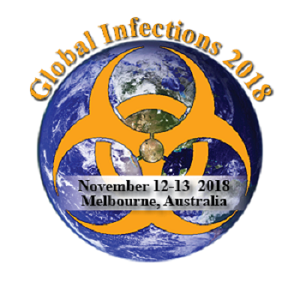
Matiwos Araya Ghebrehiwet
Asmara College of Health Sciences, Asmara, Eritrea
Title: The Association of Dietary and Serum Cholesterol Levels with Active Tuberculosis; Matched case control study
Biography
Biography: Matiwos Araya Ghebrehiwet
Abstract
Background: Cholesterol has been shown to have an intimate link with both our immunity and Mycobacterium tuberculosis. This project was to investigate the association of dietary and serum cholesterol levels with active tuberculosis.
Methodology: A hospital based matched case control study was done. Blood collected for TC, LDL-C, HDL-C and TG along with albumin levels were measured. Levels of dietary cholesterol intake were assessed by a validated food frequency questionnaire (FFQ) for all participants. Sputum samples were collected from the newly diagnosed cases. The extent of bacterial load in the sputum samples was assessed by grading the smear for AFB after ZN staining. Statistical analysis was done by SPSS version 20.
Results: levels of serum TC, LDL-C, HDL-C, TG and albumin were significantly lower in the newly diagnosed cases when compared with the controls (p<0.000) and the cases under treatment (p<0.000). The levels of serum lipids and albumin levels appear to normalize with treatment. There was significant inter group difference with categories of smear grades at p<0.05 for TC, HDL-C and cholesterol intakes. Serum lipid levels appeared to negatively correlate with the smear grading of sputum samples with Spear man rho of -0.514, -0.398 and -0.424 for TC, HDLC and LDL-C respectively at p<0.05.
There was also a significant positive correlation between the reported pre-disease habitual intake of cholesterol and smear grading of sputum sample (r=0.561 for new cases at p<0.05). The OR adjusted for several confounders was 8.57 (95%CI 1.58-46.3) for the highest quartile of intake. There was a significant positive trend between quartiles of cholesterol intake and the risk of developing active disease with P= 0.008 which remained even after the exclusion of the cases under treatment P= 0.004.
Discussion and Conclusion: Serum cholesterol was low in the new cases with a negative correlation with smear grading. This may be due to high oxidative stress and elevated cytokines seen with the onset of active ;disease. The normalization of serum lipids with treatment suggests that the lower levels seen in the new cases are due to the disease. Reported pre-disease levels of dietary cholesterol seem to have negative effects as they were positively associated with the smear grading and risk of developing active disease.

